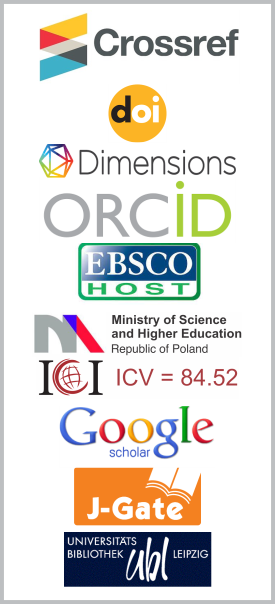Distortion of Orbits Under Fluctuating Gravitational Forces
DOI:
https://doi.org/10.26713/jims.v17i1.3103Abstract
The motion of a celestial body under the influence of a central force is considered. The influence of other bodies on the gravitational attraction force of the two-body problem is modeled as fluctuating force perturbations about a mean value. The ordinary differential equation determining the orbits is derived in polar coordinates. The exact analytical solution is given. Three cases, namely the elliptic, parabolic and hyperbolic cases are investigated. The distortion of the orbits under the influence of small perturbational forces are depicted. The equation determining the escape angle is solved numerically by the Newton-Raphson method. Effects of fluctuation frequencies on the distortion of orbits as well as escape angles are studied in detail. It is found that the force fluctuations may alter the nature of the orbits and destroy their symmetries. When the fluctuation frequency is an integer number, the orbits are distorted but the escape angles remain unaffected for the parabolic case. For non-integer frequencies, the escape angles may decrease in magnitude.
Downloads
Downloads
Published
How to Cite
Issue
Section
License
Authors who publish with this journal agree to the following terms:- Authors retain copyright and grant the journal right of first publication with the work simultaneously licensed under a CCAL that allows others to share the work with an acknowledgement of the work's authorship and initial publication in this journal.
- Authors are able to enter into separate, additional contractual arrangements for the non-exclusive distribution of the journal's published version of the work (e.g., post it to an institutional repository or publish it in a book), with an acknowledgement of its initial publication in this journal.
- Authors are permitted and encouraged to post their work online (e.g., in institutional repositories or on their website) prior to and during the submission process, as it can lead to productive exchanges, as well as earlier and greater citation of published work.




